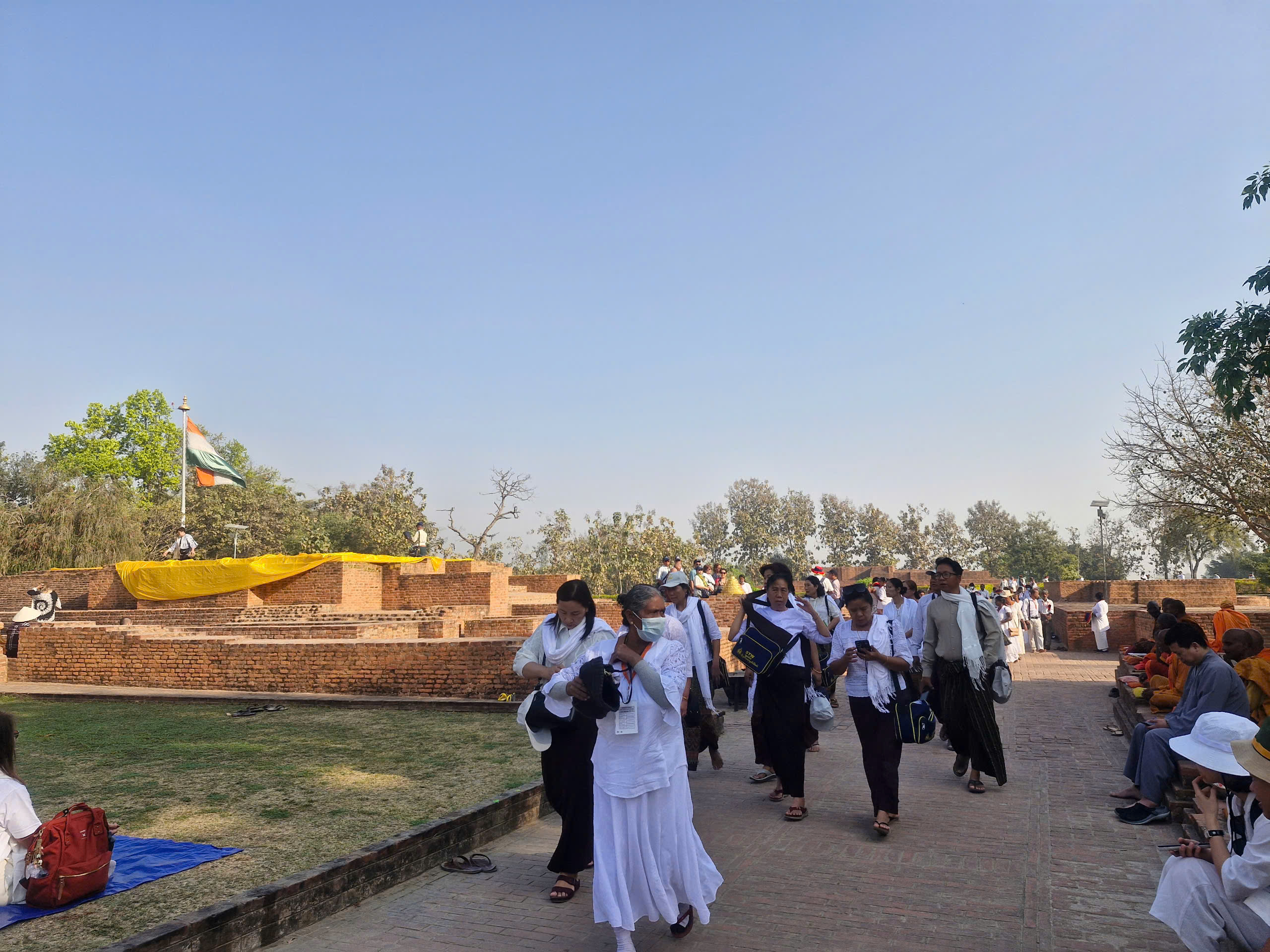 |
| Tourists from all over the world visit Sarnath Garden. |
Admire Bodh Gaya
Indigo Airlines flight number 6E1632 took off from Noi Bai Airport, Hanoi at 3am and landed in Kolkata, a city located in the East of India on the banks of the Hooghly River at 5am the same day. The weather was quite cool. After completing immigration procedures, we continued to connect to a domestic flight to Gaya and landed here after more than 2 hours of flight. Despite having to move continuously, no one in the group felt tired, because of the eager mood waiting to explore and admire one of the four sacred Buddhist sites, which is Bodh Gaya (also known as Bodh Gaya).
After lunch and a 30-minute break, our group arrived at Bodh Gaya town, located in the southeast of Bihar state. This is considered the most important holy place in the history of Buddhism, where Buddha Shakyamuni attained enlightenment after 49 days sitting under the Bodhi tree.
From the hotel to Bodh Gaya is quite close, about 5 minutes walk. Before leaving, Mr. Ngo Viet Lam, the tour guide, advised us not to bring cameras or phones inside. We had to go through 2 security checks, men on one side and women on the other, and were checked and scanned by staff quite carefully. Shoes were also left outside.
The first impression is the mysterious beauty of the central tower of Mahabodhi Temple (Great Enlightenment), located in the Bodh Gaya relic complex, one of the earliest and most magnificent architectural works built entirely of brick around the 7th century. According to Mr. Ngo Viet Lam, this is considered a typical example of an Indian brick work and had a great influence on the development of later architectural traditions.
The history of the temple dates back to around 250 BC, when the Mauryan emperor Asoka erected a monument commemorating the Buddha's enlightenment in Bodh Gaya. In 2002, UNESCO recognized it as a world heritage site. The central stupa (Mahajuśadhātu) of the Mahabodhi Temple is 55 metres (180 ft) high and was renovated in the 19th century. The Mahajuśadhātu is surrounded by four smaller stupas, built in the same style. The main stupa is topped by a circular spire containing relics of the Buddha. Inside the stupa is the main shrine housing a gilded statue of Shakyamuni Buddha, approximately 2 metres (6.6 ft) high, believed to be approximately 1,550 years old.
Many tourists and Buddhists from India and all over the world such as Thailand, Sri Lanka, Nepal… lined up to visit and worship at Bodh Gaya. We met many groups from Vietnam, it felt very familiar and close.
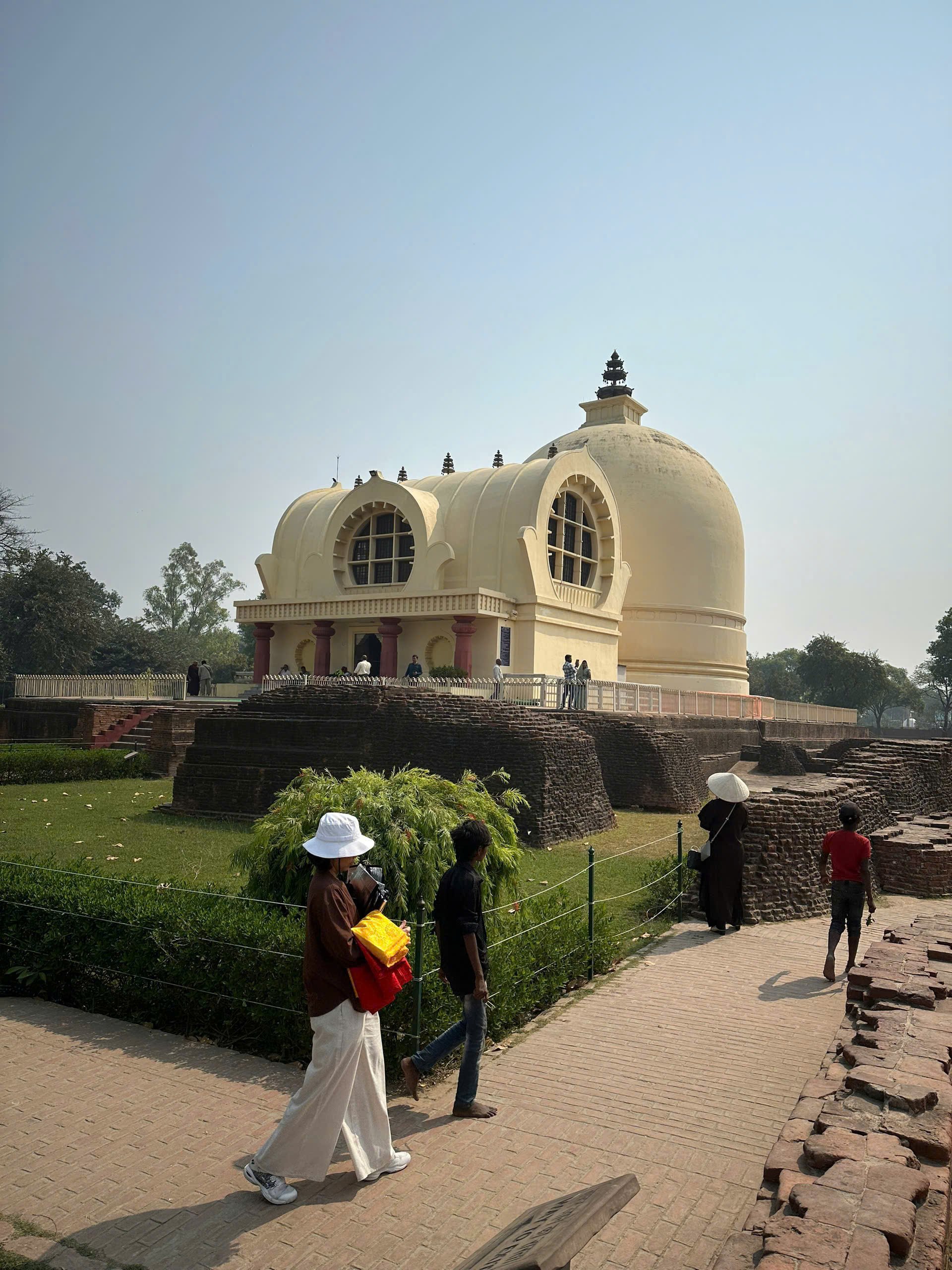 |
| A temple at the Kushinagar shrine – where Buddha entered Nirvana. |
Kushinagar - where Buddha entered Nirvana
Leaving Bodh Gaya after more than a day of sightseeing and worship, our group continued to the holy site of Kushinagar (Cau Thi Na) in Uttar Pradesh state. This is where the Buddha entered nirvana under the sala tree. Like the other three holy sites related to the life of the Buddha, Kushinagar used to be a holy place for Buddhists to worship. There were thousands of monasteries and stupas here from the 3rd to 5th centuries. After re-excavation in the 19th century, archaeologists discovered fragments of Buddha statues, pillars and inscriptions.
Entering the Kushinagar relic, the first image we saw was the Great Nirvana Tower and the Nirvana Pagoda. “The Nirvana Pagoda has a very unique architecture compared to other types of pagodas and towers that we have seen, with a height of about 45m, a diameter of about 10m and was built to worship the statue of Buddha entering Nirvana,” Mr. Ngo Viet Lam added.
Lumbini - where Buddha was born
To get to Lumbini (also known as Lumbini), one of the four most important Buddhist holy sites, we had to enter Nepal. This place is quite close to Kushinagar so traveling is quite easy, and the entry procedures are quick.
Located in the Terai Plains of southern Nepal, Lumbini was largely forgotten until 1896, when archaeologists discovered a stone pillar of the Mauryan king Asoka, dating back to 249 BC. It contained an edict stating that this was where Queen Maya Devi gave birth to Prince Siddhartha Gautama in 623 BC.
The site includes the Shakya Lake, the Maya Devi Temple, the Ashoka Pillar made of sandstone. There are also Viharas and the remains of Buddhist stupas dating back to the 3rd century BC. In 1997, UNESCO recognized the site as a world cultural heritage.
First, we visited Lumbini Park, a famous structure by Japanese architect Kenzo Tange that began construction in 1978. Right in the middle of the park is a long canal with clear blue water and as still as a sheet of paper. At one end of the canal is the Maya Devi Temple. At this end is a flame symbolizing eternal peace, and according to legend, this flame was lit in 1986 and has never been extinguished.
Having plenty of time in Nepal, our group leisurely admired the mysterious yet peaceful and cool beauty of the entire relic site.
Sarnath Garden, where Buddha gave his first sermon
The final stop on the journey to the land of Buddha, a holy place that cannot be missed is Sarnath, also known as Deer Park, about 10km from Varanasi, India, where Buddha preached. Previously, the garden was called Mrigadava, meaning deer park. According to legend, after preaching the Dharmacakravartin Sutra to 5 monks, Buddha stayed at the monastery in Deer Park during the rainy season. This place is also associated with the story of 60 monks traveling everywhere to preach the Dharma and attaining Arhatship.
Indians still tell each other that "Varanasi is older than history, older than tradition, older than legend and its age is twice as old as all of the above mentioned things combined". And the interesting thing about the ancient city of Varanasi is that the famous Ganges River has had a profound influence on the history of Indian civilization for over 5,000 years. All activities of the people of Varanasi are associated with this legendary river. "People say that if you come to the Ganges River every morning at dawn, you will see the depth of Indian culture and history. In particular, this place carries within it the sediments of time with mysterious but also very ordinary stories", Mr. Vu Hoang Hiep, a member of the group from Dong Da, Hanoi shared after leaving the Ganges River to go to Sarnath.
The end of March is the beginning of summer in India, the weather has started to get quite hot, but it is very cool in the early morning and evening. The best time to travel to India is in the winter, from October to the end of February, when the weather in all states is cool and pleasant. Tourists can rest assured because restaurants and hotels have spoons, forks, and knives ready (not by hand). If you cannot eat dishes made from curry and some other typical Indian spices, tourists can enjoy diverse cuisine from Europe to Asia. Regarding transportation, visitors can fly directly with IndiGo from Hanoi or Ho Chi Minh City to Kolkata, India, and then continue to other cities. Tuk tuk is a popular means of transportation in the city. |
On the day we arrived, Sarnath was crowded with tourists from all over the world on their pilgrimage to the land of Buddha. In Sarnath, most of the structures are displayed in the form of ruins after being excavated and restored. But standing out in the panorama is the Dhamekh stupa, or the Stupa of Turning the Wheel of Dharma or True Dharma, the most majestic and largest. The stupa was built by King Ashoka in 300 BC, marking the place where the Buddha sat to give his first sermon as well as meet his five companions during his ascetic practice. And Sarnath has always been one of the pilgrimage sites for Buddhists all over the world and is one of the Four Holy Sites that anyone would like to visit at least once.
The journey lasted nearly ten days but we only discovered a very small part of India, where many tones converge like a melodious, endless symphony. If I have the opportunity, I still want to come here many more times to explore and contemplate the interesting things in this land.
LAM GIANG
Source: https://baobariavungtau.com.vn/du-lich/202504/ve-mien-dat-phat-1038847/








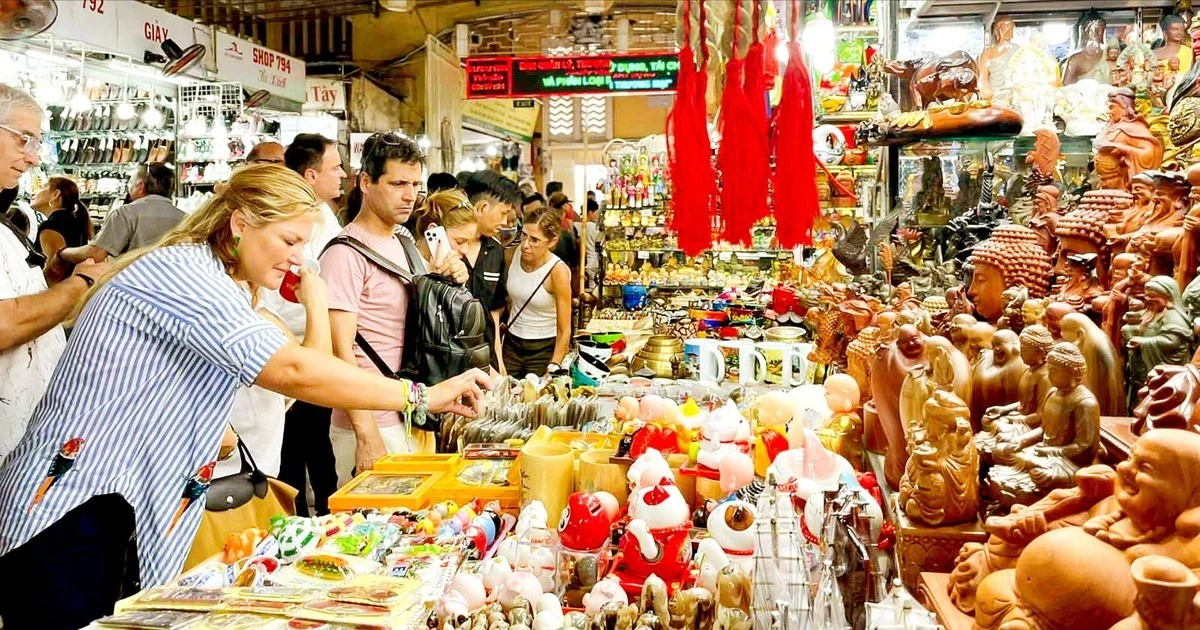


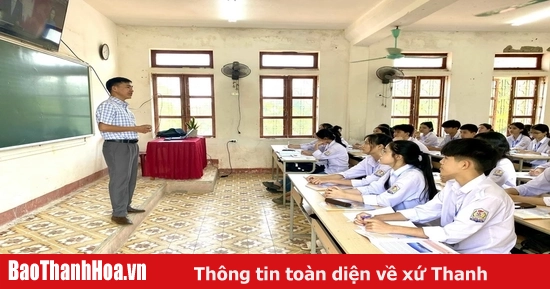

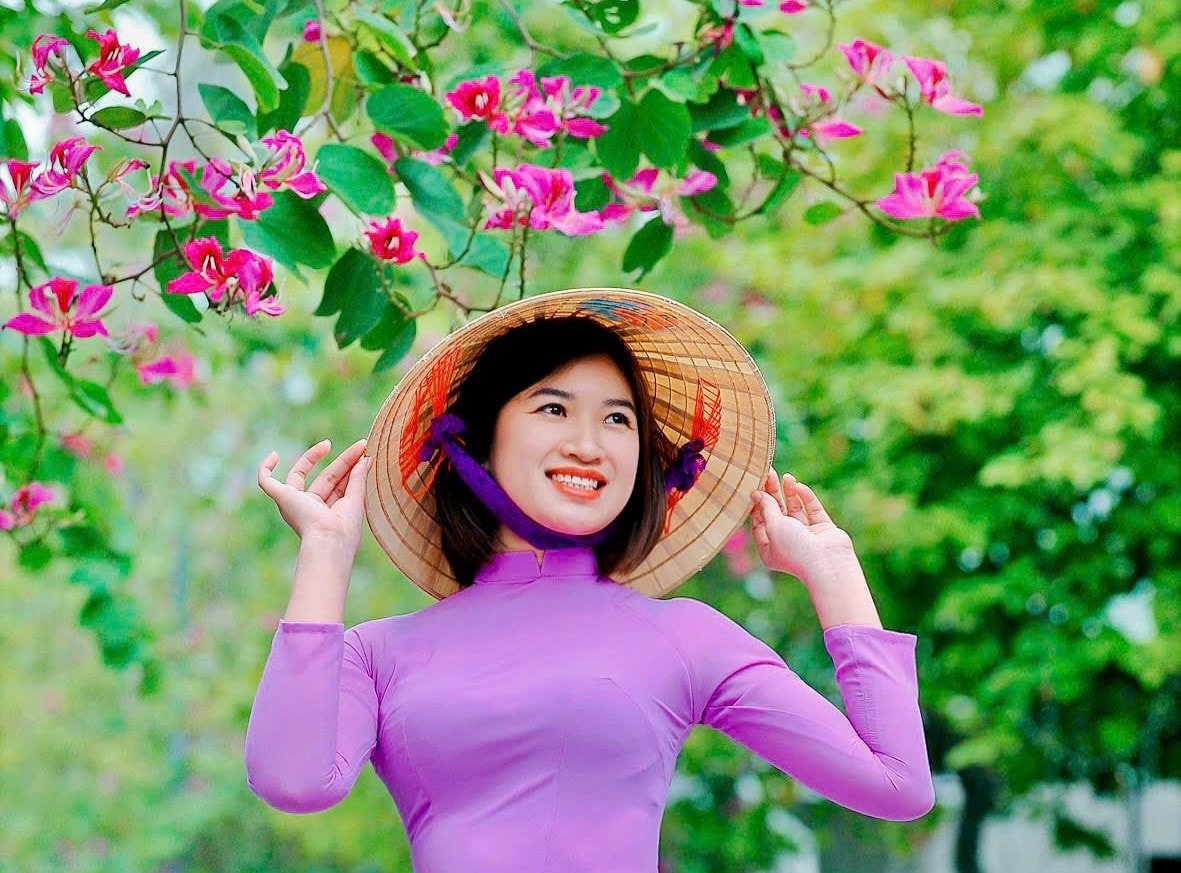



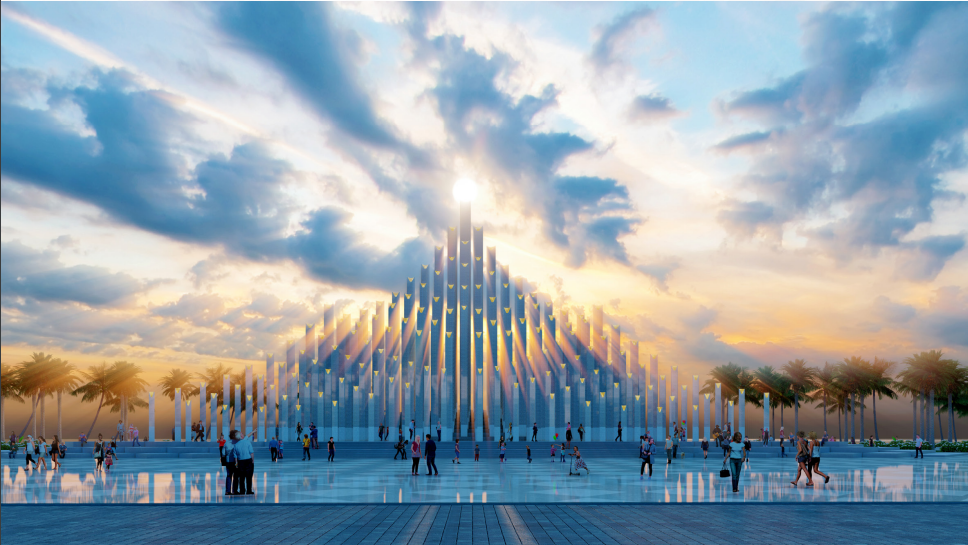
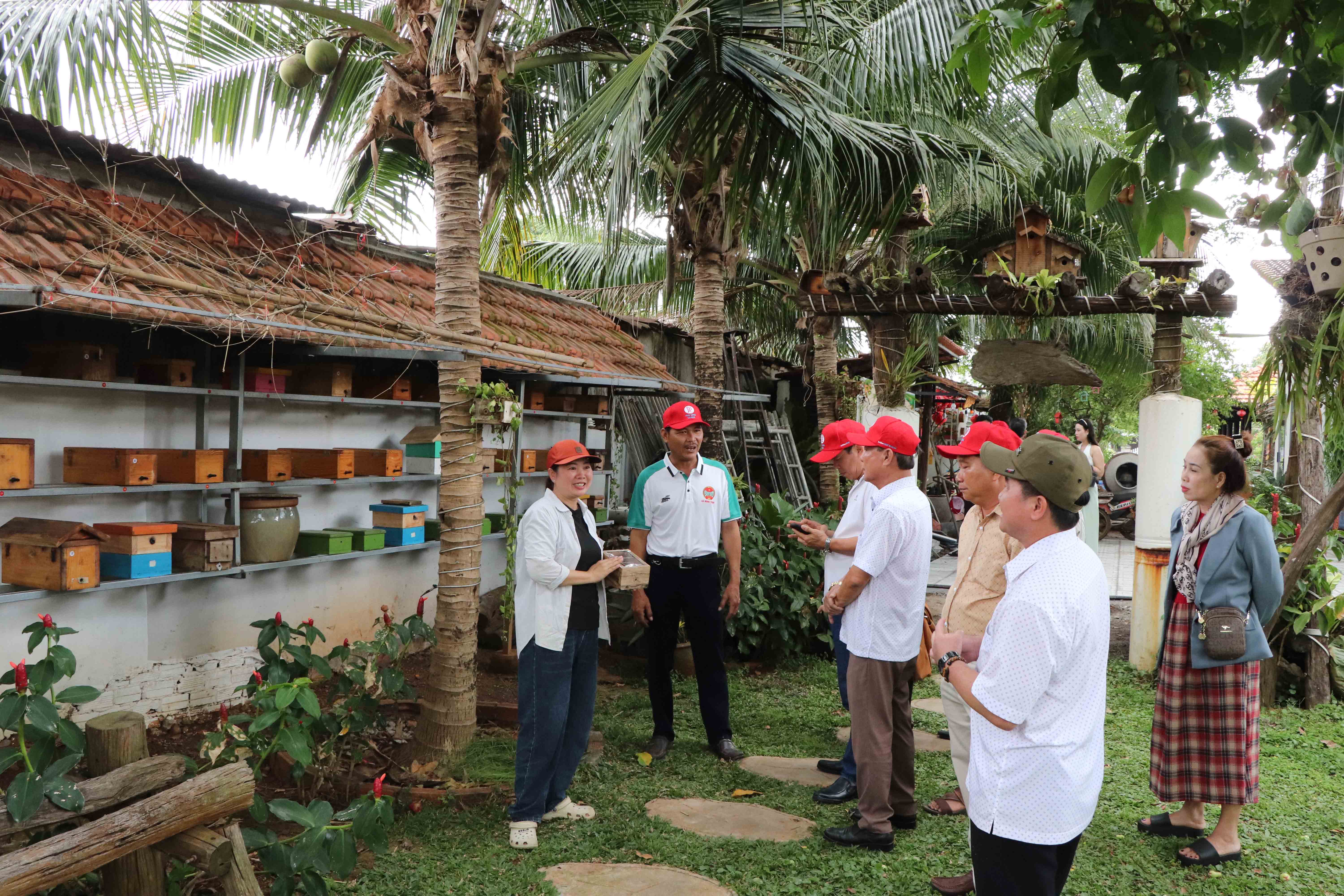
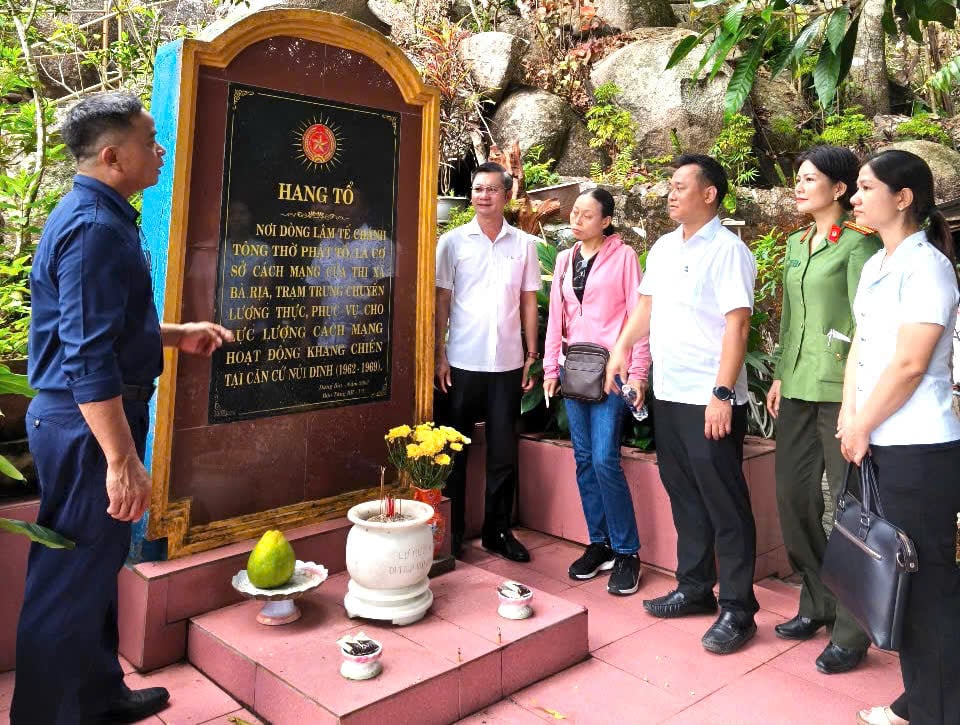

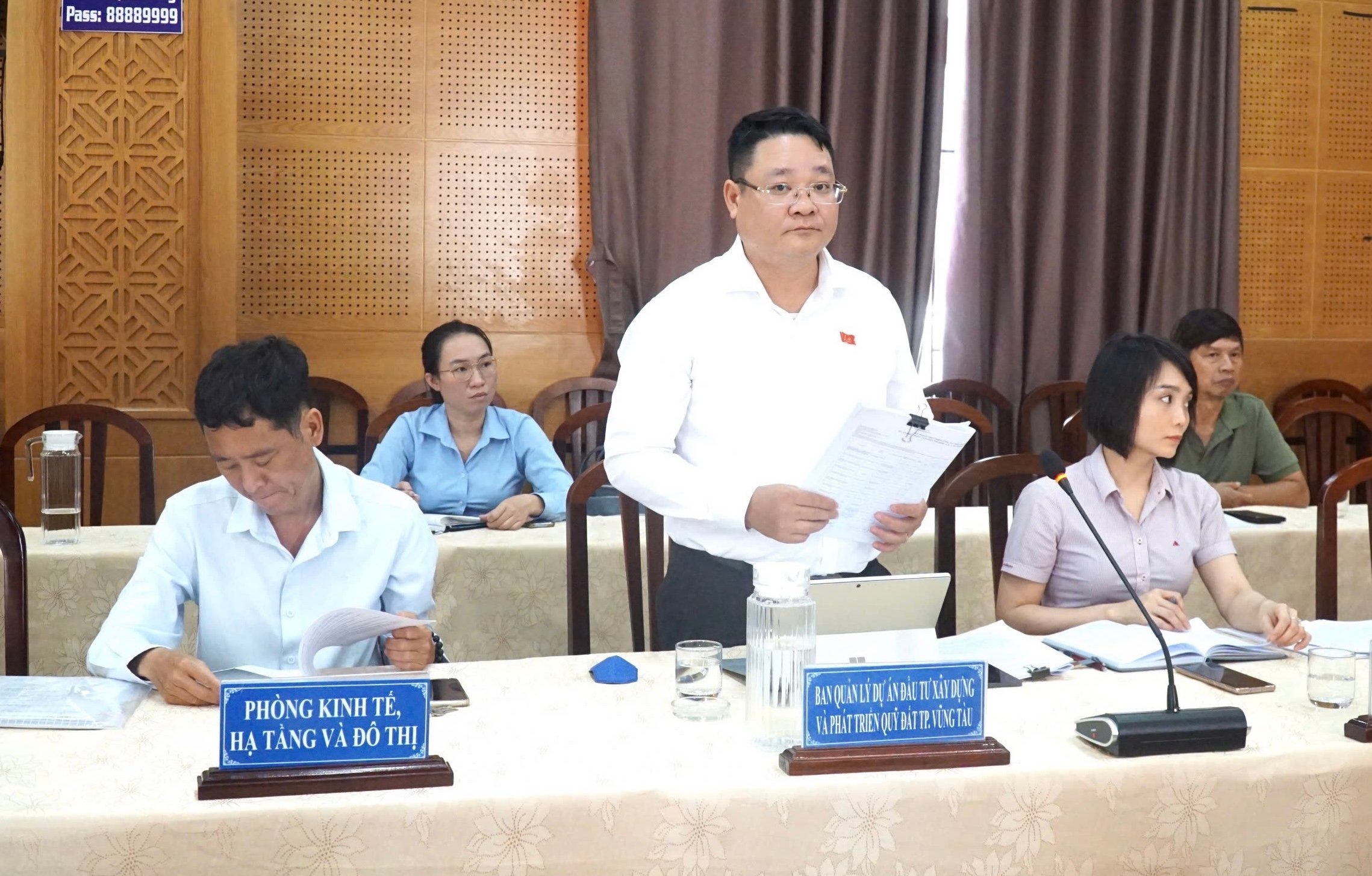


![[Photo] "Beauties" participate in the parade rehearsal at Bien Hoa airport](https://vstatic.vietnam.vn/vietnam/resource/IMAGE/2025/4/11/155502af3384431e918de0e2e585d13a)





















































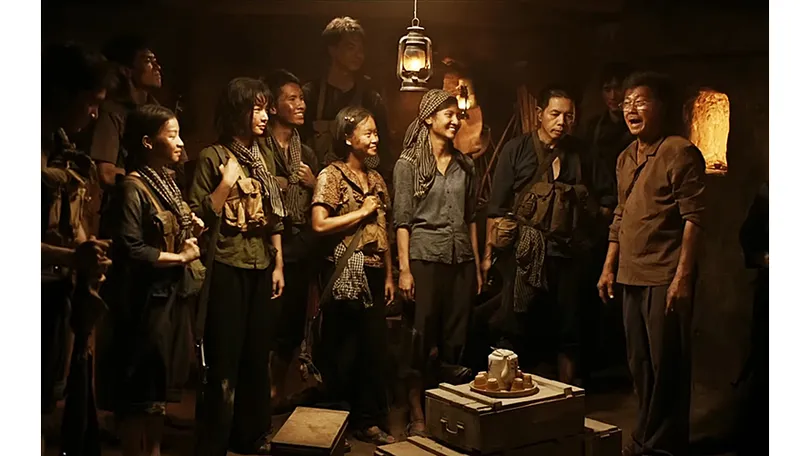











Comment (0)